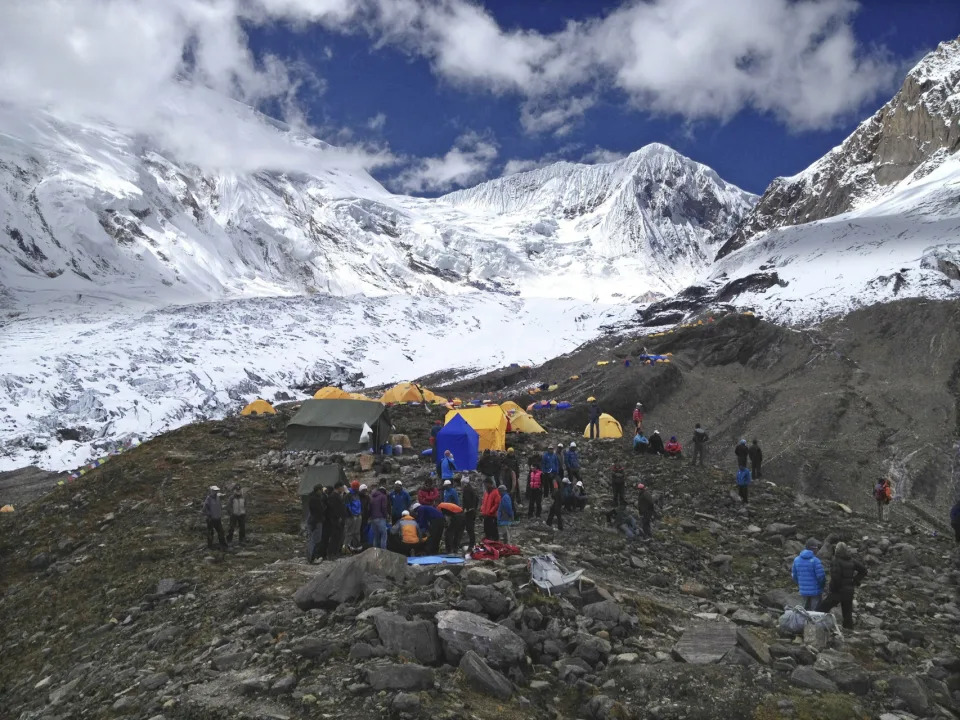Nepal banned from Saturday for foreigners solo mountain expeditions without a guide, a measure that has sparked criticism in some regions of the Himalayan country, considering that it restricts the freedom of movement of tourists.
The Nepal Tourism Board extended the requirement to carry a guide to high mountain trekkers traveling alone in an attempt to “ensure the safety of trekkers” in the country, the agency’s director, Mani Raj Lamichhane told.
The regulation, which has already been in place for a few years for mountaineers traveling alone to climb Mount Everest, was widely welcomed by private travel and tourism agencies in the Himalayan country who see it as a way to create domestic employment after the severe restrictions of the pandemic.
The president of the Nepal Trekking Agencies Association, Nilhari Bastola, estimated to EFE that this new rule would provide around 40,000 jobs for Nepalis.
In addition, hiring a guide “will not create a huge financial burden for trekkers, as for a day’s trekking the guide’s fee ranges from US$25 to US$50 per day, depending on the distance,” Bastola said.
According to the provisions, non-compliance carries a fine of 12,000 Nepali rupees (nearly $92) for tourists and 10,000 Nepali rupees ($76) for agencies offering treks to foreigners traveling alone without a guide.
PROTECTING TOURISTS
While creating jobs, the measure seeks to prevent high mountain trekkers traveling alone from getting lost, becoming disoriented or failing to show signs of life for long periods of time.
Nepal Tourist Police Inspector Chandra Kishore Shah told EFE that around a dozen hikers go missing each year.
Although many are later found, between “three and four foreigners go missing annually on different trekking routes,” where they often become disoriented, lost or suffer from altitude sickness, he added.
“Most hikers are not adequately prepared to deal with altitude sickness. If they don’t have support guides, they die,” Shah remarked.
This is the case of Lee Myungkap, a South Korean tourist who died last year due to altitude sickness in the Everest region; or that of another Korean woman who died at 5,350 meters at Thorong La Pass in Mustang County (northwest) last January.
To date, the country is still trying to locate the whereabouts of at least five missing hikers from South Korea, India, Israel, Jordan and Malaysia.
OPPOSITION FROM THE EVEREST REGION
Despite the advantages, the rural municipality of Khumbu Pasang Lhamu, where Mount Everest is located, has shown its rejection to the application of this regulation that applies to all areas where this sport discipline is practiced.
The authorities of this region have so far limited themselves to recommending the hiring of a guide for high mountain expeditions, but refuse to restrict entry to those who go without a guide, the administrative director of the municipality, Mohan Prasad Chapagain, told EFE.
For his part, Khumbu Pasang Lhamu rural municipal district chairman Laxman Adhikari believes this decision restricts the free movement of trekkers.
“Trekkers come to Nepal in search of adventure and they have the right to walk freely. We oppose this decision,” he said.
Nepal welcomed more than 33,000 mountain trekkers in the run-up to covid-19, although the annual average is around 55,000, according to government data from the Himalayan region.
Among their favorite routes are the region of Mount Annapurna (center), which receives the largest number of people interested in practicing this sport because of its low cost.

